Selected Works
He had superb taste and was one of the early art directors in the field who distinguished himself by having a rigorous design objective. It was a kind of synthesis of Bauhaus principles and Japanese sensibility.
—Milton Glaser, S. Neil Fujita, Innovative Graphic Designer, Dies at 89. New York Times
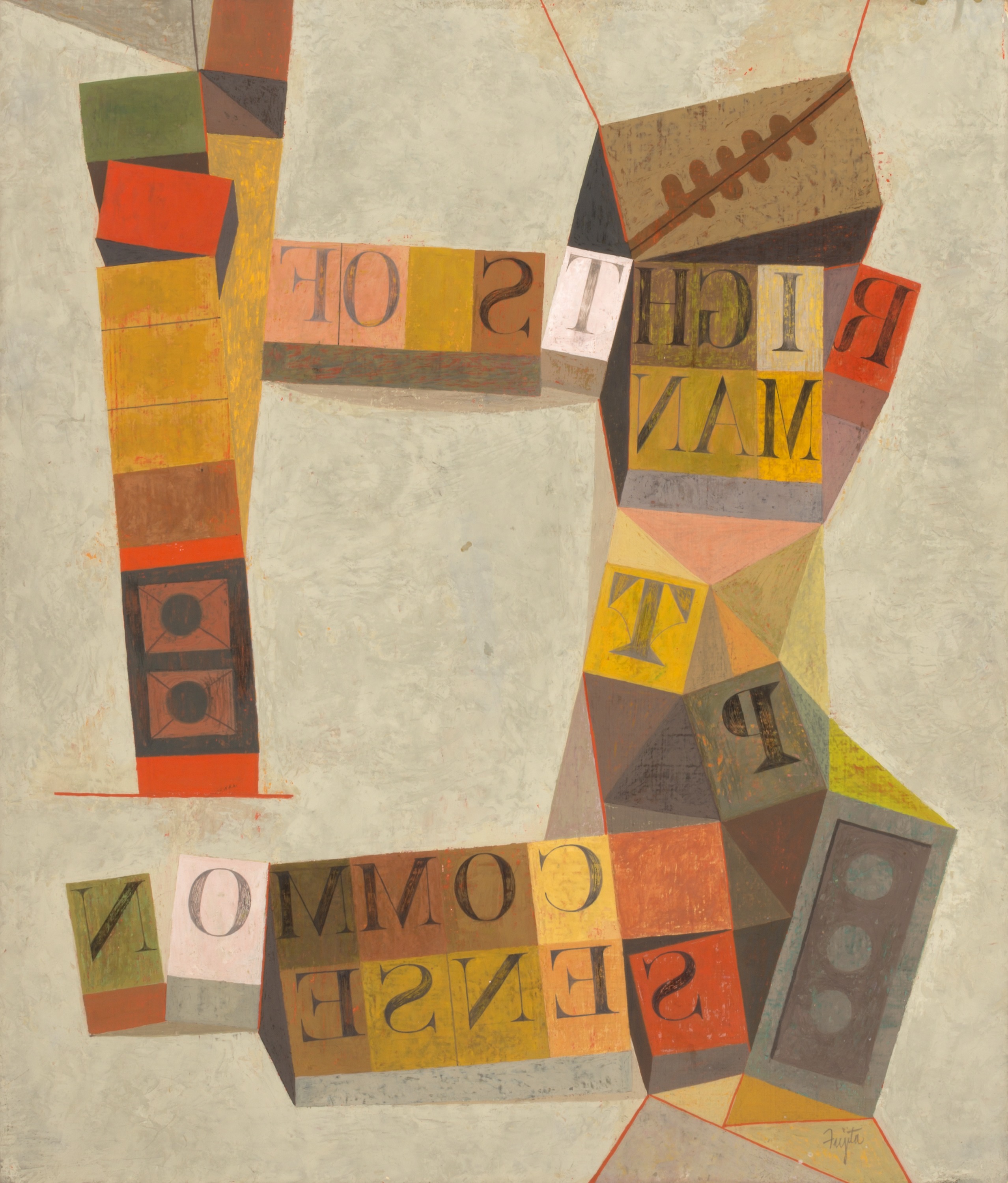
S. Neil Fujita, “What we obtain too cheaply we esteem too lightly; it is dearness only that gives everything its value. Heaven knows how to put a proper price upon its goods; and it would be trange indeed if so celestial an article as freedom should not be highly rated.” 1952, gouache on paperboard, sheet: 21 1/8 x 18 in. (53.8 x 45.8 cm), Smithsonian American Art Museum, Gift of Container Corporation of America, 1984.124.96
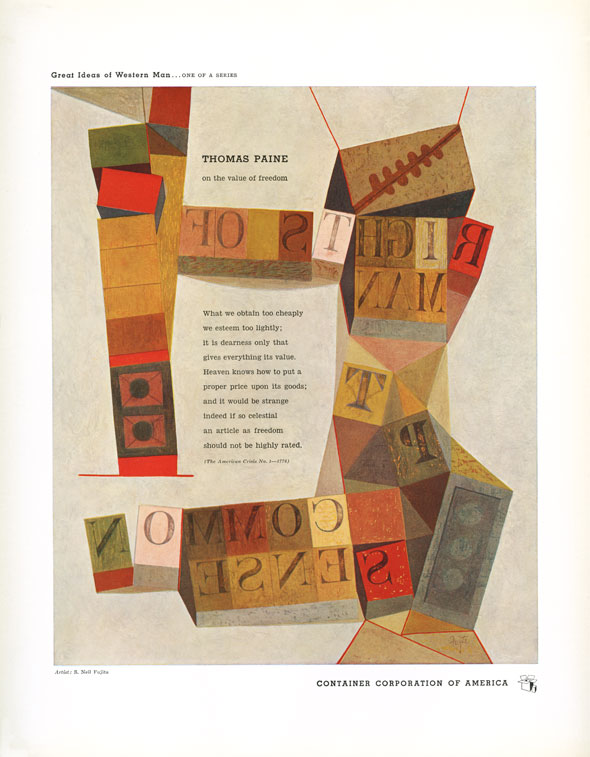
Container Corporation of America
Gold prize, New York Art Directors Club, 1953.
Container Corporation of America’s “Great Ideas of Western Man” advertising campaign was Herbert Beyer’s unique invention which took place from 1950 to 1975. This series of campaign paired prominent modern artists and designers, using quotes from philosophers, scientists, and politicians—this was a groundbreaking ad campaign, championing art and design beyond commercial communication. Fujita worked on this campaign in 1952, awarded gold medal from the New York Art Directors Club for excellence in typography, composition and aesthetic.
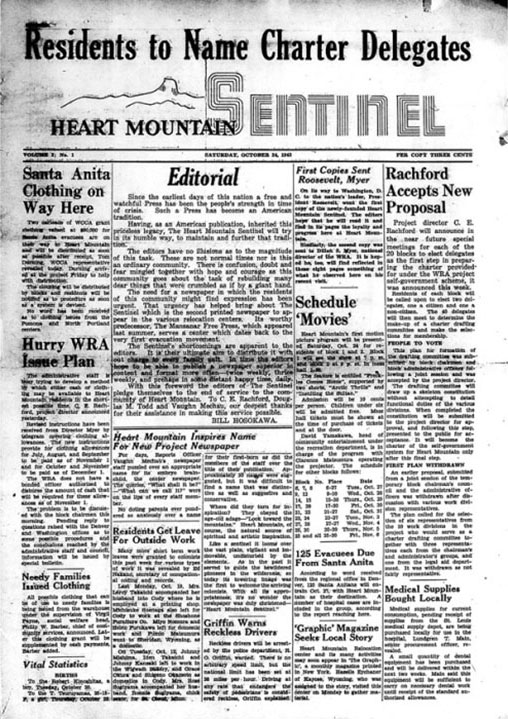
Sentinel
Fujita's very first design job.
Incarceration of Japanese Americans crushed many lives and dreams. Despite the disheartening condition, Japanese Americans in the camp thrived, building community in each camps. They established newspapers, markets, schools, and even police and fire departments. Sentinel was among those social activities in Heart Mountain Relocation Center. Fujita took the job as an art director for it, applying his drawing to newspaper as well.
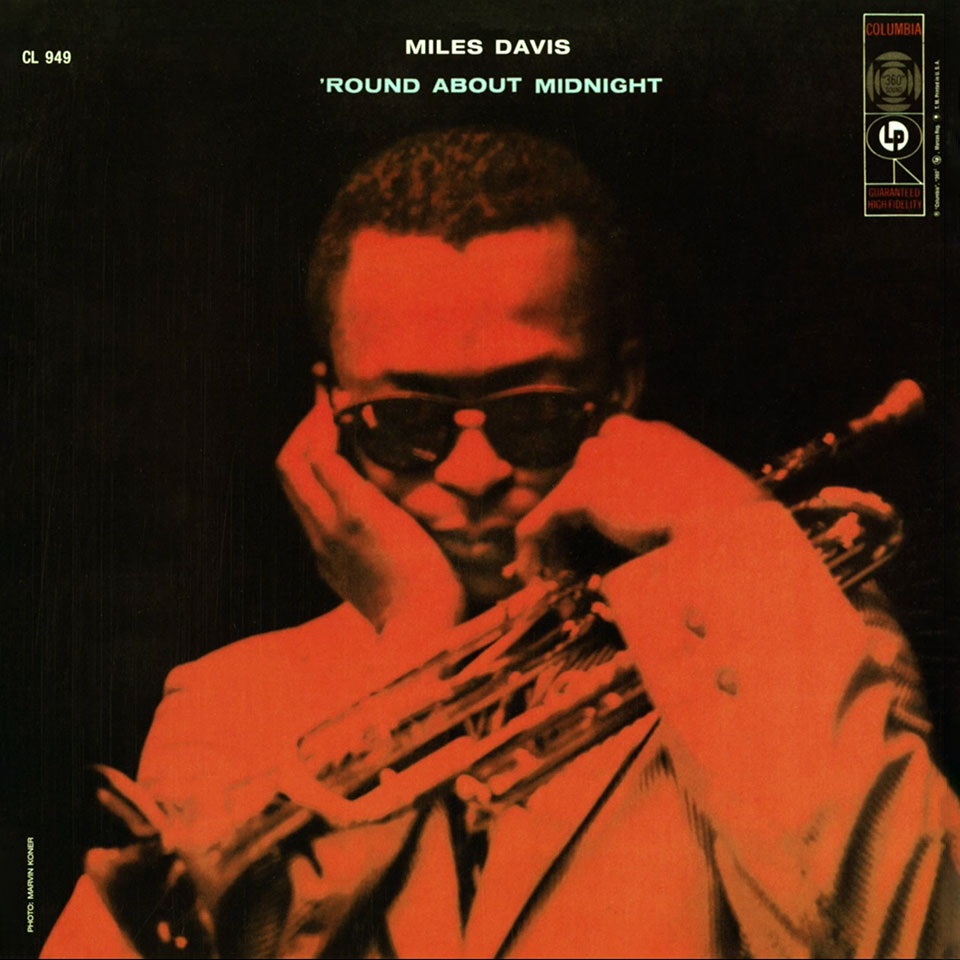
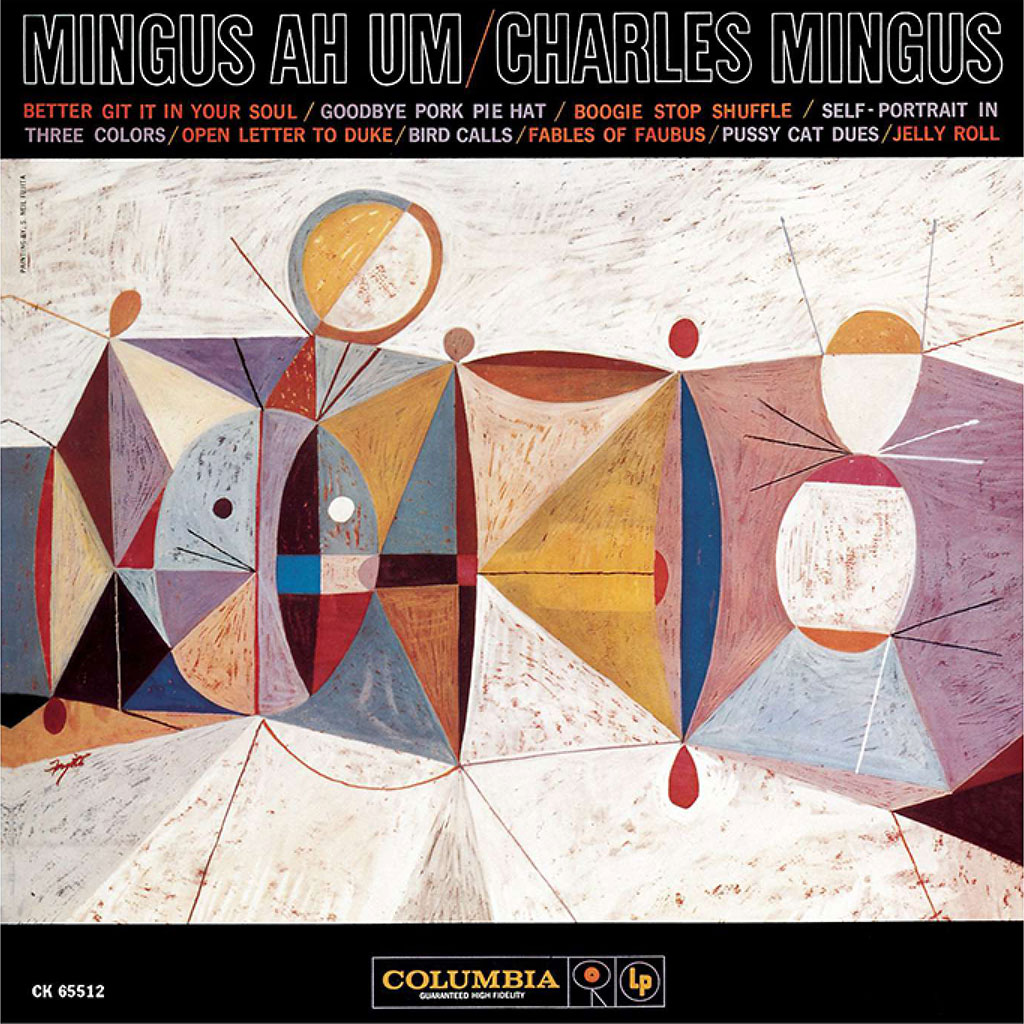

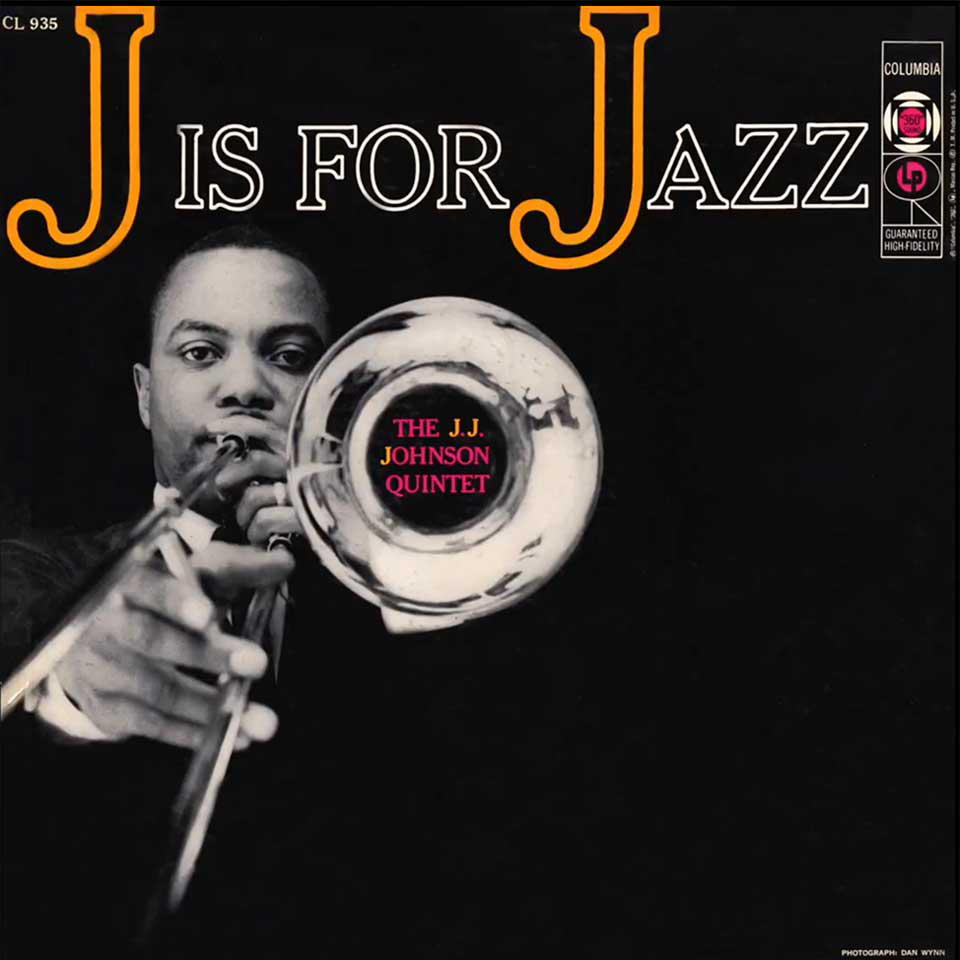
Jazz Album Covers
Crafting the new look and feel of pop culture.
Joining Columbia Records in 1954, Fujita led an in-house design department upholding and building upon the legacy of renowned art director Alex Steinweiss’s work, competing with other labels like Blue Note. During his tenure, Fujita transformed the album artwork by collaborating with artists and photographers, sometimes using his own drawings, which established a new look and feel of jazz—the pinnacle of pop culture at that time.


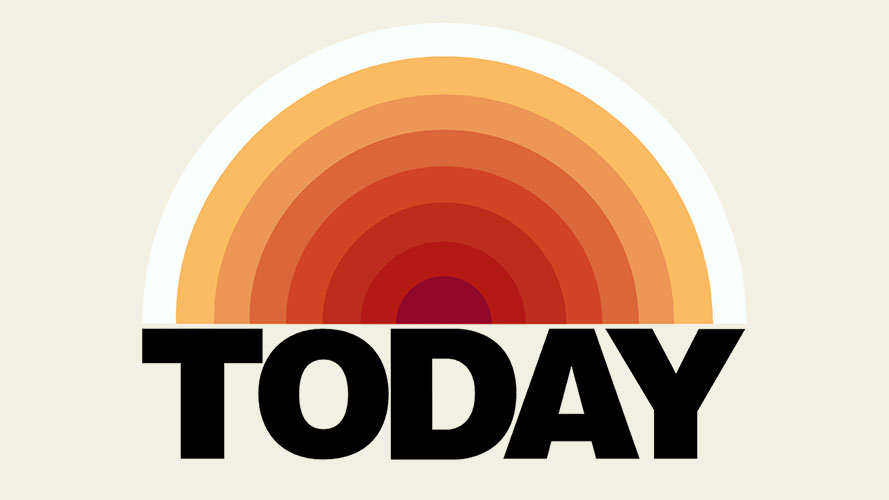
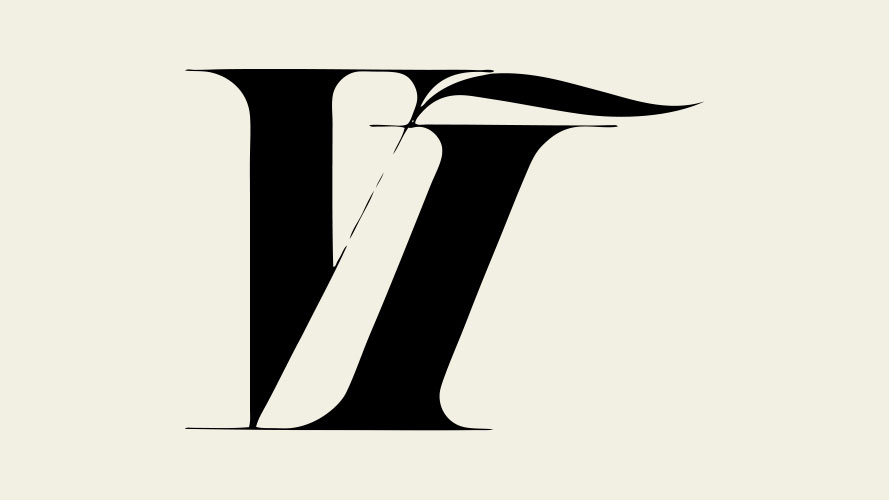
Book covers, logos
Trail blazing in graphic design.
After leaving Columbia Records, Fujita continued to push the envelope of design in book jackets and logo design. His works ranged from Truman Capote‘s In Cold Blood in 1966, the hand-clutching-a-crucifix image for Mario Puzo‘s The Godfather in 1969, which became an icon, to logo designs for companies and TV shows.

Lifelong Artistic Activity
When Emmett Till Died, 1955.
Alongside the design works, S. Neil Fujita didn't lose passion for painting and drawing. 'When Emmett Till Died' was done in 1955, inspired by the actual event occured same year. Fujita was a compassionate man, never forgetting his lost fellow men in the frontline, people who are experiencing the oppression, fighting to overcome the prejudice.